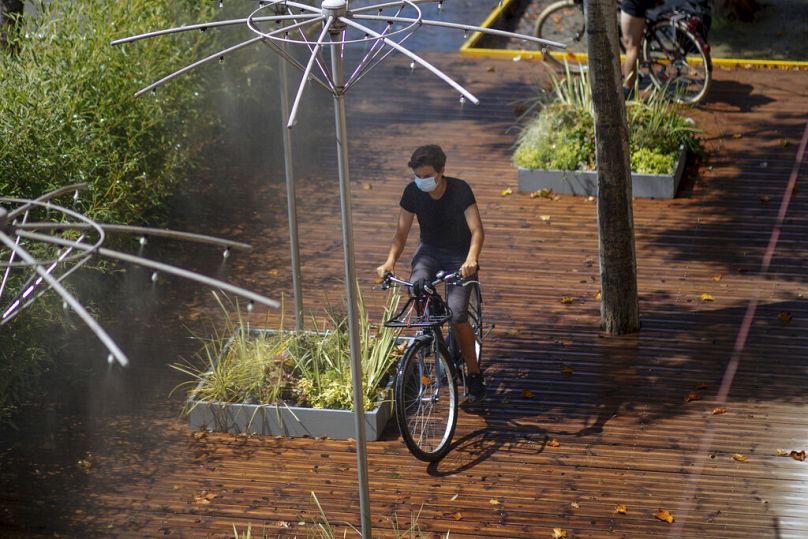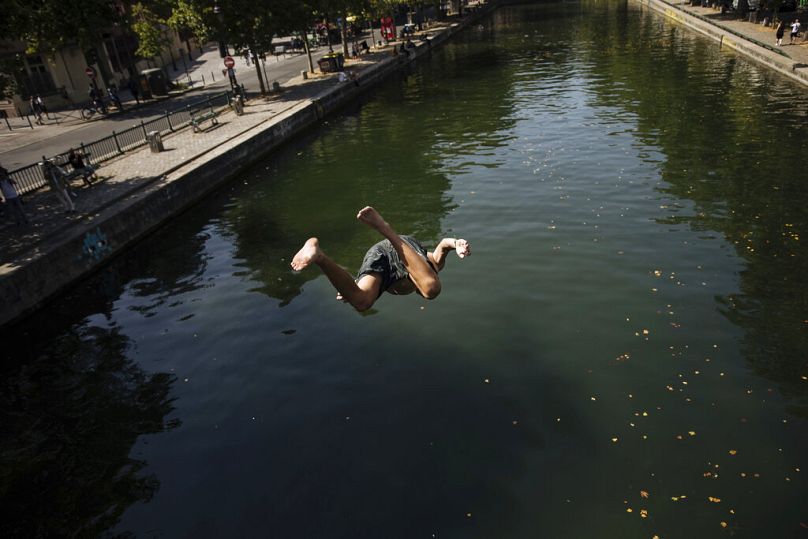With the world’s cities set to be home to more than two-thirds of the global population by 2050, it is crucial we learn to act, rather than react — before it’s too late, Jonathan Birdwell writes.
Fencing in the Grand Palais, show jumping in the Palace of Versailles and basketball on Place de la Concorde — there’s no doubt the Paris Olympics will have an air of the "wow factor".
In just four months' time, we’ll see the French capital bursting at the seams with spectators flocking for 16 days of games, across 35 venues in the city.
Despite concerns over whether the public transport system is fit for purpose, the 2024 Olympics claims it will be "the greenest in history".
Spearheaded by mayor Anne Hidalgo’s sustainable vision for Paris, the aim is to reduce by more than half the carbon emitted by London 2012 and Rio 2016.
This will be achieved, in part, due to the city’s ability to use existing infrastructure for events, compared to predecessors. 95% of the Olympic venues this year have already been built.
But what does that mean for regulating temperatures — if Paris is headed for another scorching summer?
The most at-risk capital in Europe says 'no air conditioning'
French heatwaves have become all too common over the last five years. Paris saw record-high temperatures of 42.6°C in 2019 — and heat radiating off the pavement outside the Garnier Opera House hit 56 °C in 2022.
According to a recent report in the Lancet, the city’s population is the most at risk of dying from heatwaves than any other capital in Europe.
Paris officials have responded by opting for natural protections to ensure that indoor temperatures are at least 6°C cooler than outside temperatures.
They have run simulations to see the impact of rescheduling outdoor events to start earlier or later in the day — and the River Seine is being cleaned up, both for marathon events and the public thereafter (swimming has been banned since 1923).
The Athlete’s Village has been purpose-built in the northern suburbs of the city. Here, athletes will be provided with fans in their rooms, but there's a catch: there is no air conditioning.
Air con is often hailed as one of history’s most transformative inventions. But cooling equipment produces potent greenhouse gases. Instead, designers have developed a natural geothermal cooling system for the Village, much like the one that has helped the Louvre cope with the heat in recent years.
The system will continue to regulate temperatures after the tournament when the building turns into an apartment and office complex.
But with the prospect of 40°C temperatures according to the World Meteorological Organisation, conditions could still be difficult, if not unbearable, and some delegations are already complaining.
So what’s the solution, and what does it teach us about a city’s resilience to climate shocks?
Paris not alone
The French capital might be in the spotlight now, but it is far from alone when it comes to dealing with extreme temperatures, along with other risks to urban infrastructure like floods and storms.
China’s temperature record drove people to seek relief in bomb shelters, monsoon rains washed away bridges and homes in northern India and Storm Hilary, the first tropical storm to strike California in 84 years, triggered nearly a year’s worth of rain in a single day.
According to Economist Impact’s Resilient Cities Index, 20 out of 25 of the world’s major cities have a detailed plan to cope with our ever-changing environment.
Miami, Dhaka and Freetown have appointed Chief Heat Officers, while Phoenix and Los Angeles are leading the way on technological innovations such as using special pavement coating to reflect more sunlight and Paris and Singapore alike are investing in green walls and building neighbourhoods that support passive cooling, from natural ventilation methods to adding shade through overhanging roofs painted white.
Extreme heat needs to be taken seriously as a public health issue — it’s life-threatening. In response to concerns around overheating at the Olympics this year, Director Laurent Michaud says ventilators vaporising water droplets could be installed instead of traditional air conditioning units.
These "evaporative coolers" are much more energy-efficient and don’t contain any harmful, synthetic refrigerants. Maybe this is a compromise?
A city's resilience depends on how well it adapts
Paris shows us how critical it is for societies and governments to evaluate their risk management practices and create a built environment that can withstand an uncertain future.
A resilient city should be able to adapt to unfolding risks and plan ahead.
In the realm of urban planning and governance, the gap between policy and implementation remains a significant challenge.
But with the world’s cities set to be home to more than two-thirds of the global population by 2050, it is crucial we learn to act, rather than react — before it’s too late.
Jonathan Birdwell is Global Head of Research at Economist Impact, an environmental think tank.
At Euronews, we believe all views matter. Contact us at view@euronews.com to send pitches or submissions and be part of the conversation.













